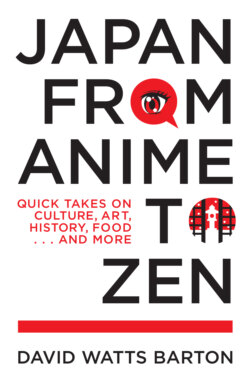Читать книгу Japan from Anime to Zen - David Watts Barton - Страница 17
На сайте Литреса книга снята с продажи.
6. Noodles: Udon, Ramen, Soba, Yakisoba, and Somen
ОглавлениеAlthough rice-based sushi has become an international staple food, in Japan you won’t have too many meals without encountering one of the country’s other culinary basics: noodles.
Whether in the form of udon, soba, yakisoba, somen, the universally popular ramen, or some other variety, Japan’s love affair with noodles is rich and varied. In a broth, in hot dishes, or in cold salads with a variety of dipping sauces, the Japanese can do nearly anything with noodles.
Travelers are wise to try different noodle dishes while visiting Japan. Since the ways that noodles are served in Japan are largely regional, be sure to try the local ramen, soba, or udon wherever you go—their preparation is likely to be quite different from the ones you tried only 50 kilometers away.
RAMEN
Despite its ubiquity, and the variety of forms it can take, ramen is a relatively new addition to Japanese cuisine: It was introduced from China barely more than one hundred years ago. It was known as shina soba (Chinese soba) until the 1950s, when it got its current name, the Japanese pronunciation of the Chinese word lamian—literally “pulled noodle”—a reference to the process by which it is made.
But it was the 1958 creation of instant ramen by inventor Momofuku Ando that made ramen a national, and then international, favorite. Instant ramen is so beloved by the Japanese that it was once chosen by popular vote as “the greatest Japanese invention of the 20th century.” There is a whole museum dedicated to it in Yokohama.
Ramen is arguably the king of noodles in Japan, despite its late arrival. These thin wheat noodles are served in a variety of broths, from shio (salt) and shoyu (soy sauce) to tonkotsu (pork bone) and the newest style of ramen, miso. Unlike other Japanese noodles, ramen is almost always served hot and is a quick and cheap solution to inconvenient hunger anywhere in Japan.
While a bowl of ramen can contain many different ingredients, the secret ingredient of the noodle itself is a form of alkaline water known as kansui, originally from the lakes of Inner Mongolia, which is said to give the noodles a firmer texture than, say, yakisoba. Eggs are often substituted for the kansui; most use a chemical concoction that mimics the effect.
SOBA
Soba noodles are made primarily (but not exclusively) of buckwheat (soba), which gives them a strong, distinct flavor. Various soba dishes are zaru soba, kake soba, tempura soba, kitsune soba, and tororo soba. Be mindful: The word “soba” is often used for all noodles, but soba noodles also describe a particular kind. They are easy to distinguish by their brown color and dense texture.
Soba noodles, in their various forms, are perhaps the healthiest choice of all of Japan’s many noodles, and given their low wheat content they can be good for those wanting to avoid gluten (look for the word juwari, which means 100% buckwheat).
UDON
Udon noodles are the most substantial of Japanese noodles, thick and with a chewy texture. Made from wheat flour, udon is served hot in the winter and cold in the summer, varying just as much as ramen and soba dishes. Because of their neutral flavor, udon noodles go with everything from curried broths to toppings that include deep-fried fish, various vegetables, pork … the possibilities are endless.
Even the udon noodles themselves are available in great variety, many boiled, some deep-fried, but they are generally considered to be best when fresh (as opposed to dried). Shapes include flat, wide, and thin, and others that are much thicker and rounder.
YAKISOBA
Despite its name, yakisoba isn’t a kind of buckwheat noodle; it is made with wheat flour. Like ramen, it is a relatively recent creation, having first appeared in Japan (from China) in the early 20th century. It is most often served as a fried noodle, but there’s also yakisoba-pan, in which the noodles are laid lengthwise on a hotdog bun (pan) and then garnished with mayonnaise and shreds of pickled ginger. Yes, the Japanese will literally eat anything.
SOMEN
The last basic form of Japanese noodle is again wheat-based, and not so different in flavor and texture from udon. But somen noodles are much thinner and are made not just with flour and water, but also with vegetable oil, and they are stretched while being formed, which gives them a somewhat more substantial mouth feel, despite their tiny diameter.
Somen are often served cold, especially in summer, with a bonito-flake-based dipping sauce called tsuyu that can be further flavored with ginger or onion for a wonderful cooling effect. One literally cool way to eat somen is as nagashi somen (flowing noodles). The noodles are placed in long open bamboo stalks through which fresh, cold water is flowing. Diners can then pick the noodles out of the flow with chopsticks and dip them in tsuyu or some other dipping sauce.
***
These are just a few of Japan’s noodle options. Try them all.
